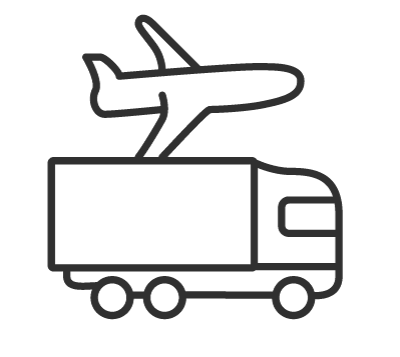Challenges and Typical Model Purposes
Regardless whether we work with Transport (Bus, Train, Ferry), Distribution, Postal, Railways or Harbors, it is almost always about cost and profitability. The unit of measure and the possibility for the companies to effect and optimize filling space is very different between them. Many logistic groups have warehouses and hubs at several locations and not only do they want a costing model, we also see a wish for bench-mark models.
When we work with logistic functions in manufacturing companies, the purpose is often allocation of distribution expenses to products to get a FAC product result. As part of the logistics includes warehouses, which is a function where we see many companies want to know the costs because they consider outsourcing some services. To have solid material to base such strategic decision on, it is important to really understand the full and true costs. Many companies tend to forget the work performed outside the warehouse by the warehouse staff. Warehouses are used for both raw material, semi products and finished products at many companies and the “delivery” of materials to the production lines is done by warehouse staff. You have temporarily placement of semi products in the warehouse so it does not block the production flow. Such flows are not always standard and visible in the standard cost flow. It is often seen that raw material mixing and quality check starts in the warehouse to reduce production time, a service where you have to understand the full process flow and internal costs before you will be able to consider outsourcing. By interviewing people we manage to find these small deviations and bring it to the model, which not only gives a cost but it also gives managers an understanding of resource usage and why they are so busy as they claim to be.
Case example
For ONE OF THE LARGEST COURIERS OPERATING WORLD WIDE we did an assessment followed by a pilot model that was presented after 2 weeks. After that we designed a generic warehouse and hub model, where it was possible to calculate profitability per package and bench-mark processes. Further we designed a Group model to calculate and distribute Group expenses to warehouses and hubs. Finally we did a software validation process where we in the end presented 3 software, where of the courier selected one of them and implemented the model.
For a NORTHERN EUROPE RAILWAY, we made models for their four business areas: One for the trains including passenger and postal transportation, one for the maintenance of trains and rails, one for the shops in the trains and finally one for the shops are train stations. The models are used in different departments in the company and therefore separated from each other but results for trains and shops at trains can be combined when needed. Models are used for profitability, price setting, outsourcing and budget/forecasting.

